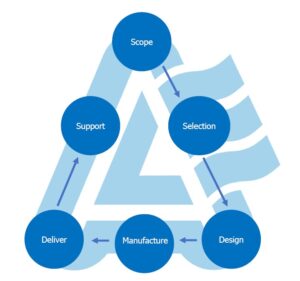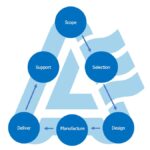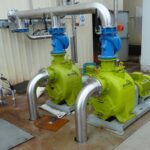As well as being self-priming, AODD pumps will run dry without doing any damage and use no electricity. In certain applications where electricity isn’t available, or must not be used, an AODD pump is the perfect solution due to being completely powered from compressed air.
AOOD pumps are very versatile, and are able to pump a wide range of fluids ranging from fluidised dry powder to shear-sensitive liquids, viscous liquids and abrasive slurries.
Now to talk about the actual components of the pump itself.
AODD pumps are known for their simple design and how easy they are to operate. In Figure 1, A&B are the diaphragms, 1-4 are the valve balls and I and O are the inlet and outlet ports. The air valve is usually a shuttle valve to direct the compressed air alternatively to each diaphragm. The movement of diaphragm A towards the middle of the pump generates a partial vacuum in the chamber.
This activity causes ball valve 1 to close, while ball valve 2 opens as air pressure moves the liquid in the pump from the inlet to the chamber. While this is happening, diaphragm B compresses the volume in its chamber, which causes valve 3 to close and forces the fluid past valve 4 and out through the outlet port. When the air valve drives back the movement of the diaphragms, fluid is pumped through the left hand side of the pump.
A hint we like to give companies that have these pumps in use 24/7, in critical applications, having a spare pump that can be swapped in the event of a pump failure is essential. This may literally just be a spare, or one being used in a different application that can be used at short notice.
These pumps are also simple to repair, following a step-by-step procedure in the manuals. Both ‘wet-side’ and ‘air-side’ kits are available.
This is also applicable for the cost of repairs and refurbishment. In today’s marketplace, its often cheaper to simply buy a new pump rather than pay for a repair. Bearing in mind, that it’s not just the repair you are paying for, it’s the cost of downtime in production. In the world of AODD pumps, the rule of thumb is that pumps less than a 1/2” are generally not worth repairing.


























































































